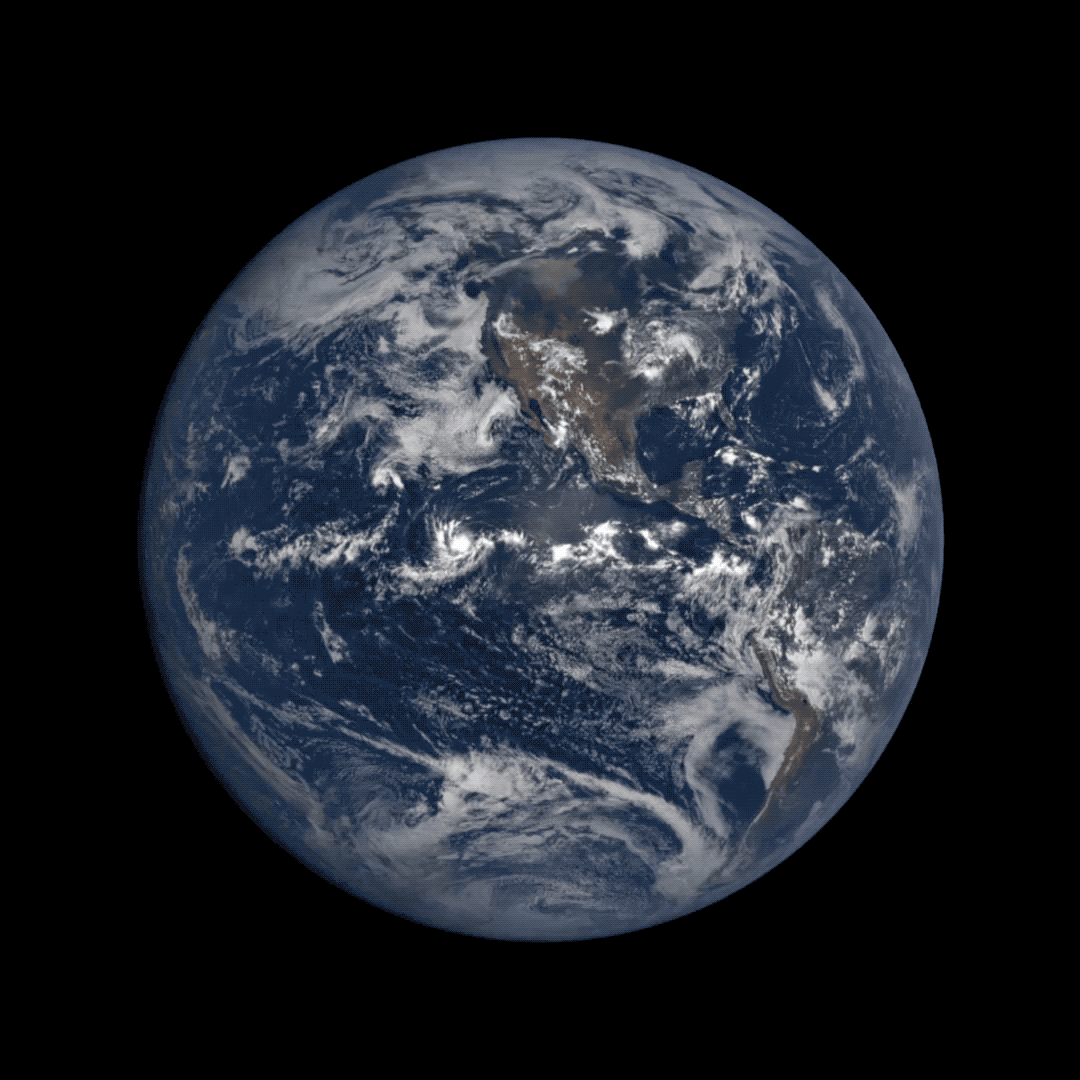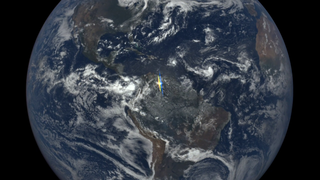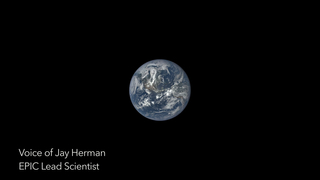Earth
ID: 13056
NASA's Earth Polychromatic Imaging Camera (EPIC) sits onboard NOAA's Deep Space Climate Observatory (DSCOVR) satellite at the Lagrange point 1, a million miles away from Earth.
EPIC has been imaging the sunlit side of Earth between 13 and 22 times a day since 2015. Now, scientists have developed ways to use these images to study specific elements of our home planet's atmosphere and plant life, like ozone in the stratosphere, the makeup of clouds and the health of vegetation on land.

EPIC New Science from 1 Million Miles Away
EPIC has been imaging the sunlit side of Earth between 13 and 22 times a day since 2015. Now, scientists have developed ways to use these images to study specific elements of our home planet's atmosphere and plant life, like ozone in the stratosphere, the makeup of clouds and the health of vegetation on land.

Related
Credits
Kathryn Mersmann (USRA): Lead Producer
Samson K. Reiny (Wyle Information Systems): Lead Writer
Alexander Marshak (NASA/GSFC): Scientist
Joycelyn Thomson Jones (NASA/GSFC): Image Processing
Samson K. Reiny (Wyle Information Systems): Lead Writer
Alexander Marshak (NASA/GSFC): Scientist
Joycelyn Thomson Jones (NASA/GSFC): Image Processing
Please give credit for this item to:
NASA's Goddard Space Flight Center
NASA's Goddard Space Flight Center
Short URL to share this page:
https://svs.gsfc.nasa.gov/13056
This item is part of this series:
Narrated Movies
Keywords:
DLESE >> Atmospheric science
SVS >> HDTV
GCMD >> Earth Science >> Atmosphere
GCMD >> Earth Science >> Biosphere >> Vegetation
GCMD >> Earth Science >> Atmosphere >> Atmospheric Chemistry/Oxygen Compounds >> Ozone
GCMD >> Earth Science >> Atmosphere >> Clouds >> Cloud Liquid Water/Ice
NASA Science >> Earth
SVS >> DSCOVR
SVS >> EPIC
GCMD keywords can be found on the Internet with the following citation: Olsen, L.M., G. Major, K. Shein, J. Scialdone, S. Ritz, T. Stevens, M. Morahan, A. Aleman, R. Vogel, S. Leicester, H. Weir, M. Meaux, S. Grebas, C.Solomon, M. Holland, T. Northcutt, R. A. Restrepo, R. Bilodeau, 2013. NASA/Global Change Master Directory (GCMD) Earth Science Keywords. Version 8.0.0.0.0
https://svs.gsfc.nasa.gov/13056
This item is part of this series:
Narrated Movies
Keywords:
DLESE >> Atmospheric science
SVS >> HDTV
GCMD >> Earth Science >> Atmosphere
GCMD >> Earth Science >> Biosphere >> Vegetation
GCMD >> Earth Science >> Atmosphere >> Atmospheric Chemistry/Oxygen Compounds >> Ozone
GCMD >> Earth Science >> Atmosphere >> Clouds >> Cloud Liquid Water/Ice
NASA Science >> Earth
SVS >> DSCOVR
SVS >> EPIC
GCMD keywords can be found on the Internet with the following citation: Olsen, L.M., G. Major, K. Shein, J. Scialdone, S. Ritz, T. Stevens, M. Morahan, A. Aleman, R. Vogel, S. Leicester, H. Weir, M. Meaux, S. Grebas, C.Solomon, M. Holland, T. Northcutt, R. A. Restrepo, R. Bilodeau, 2013. NASA/Global Change Master Directory (GCMD) Earth Science Keywords. Version 8.0.0.0.0













